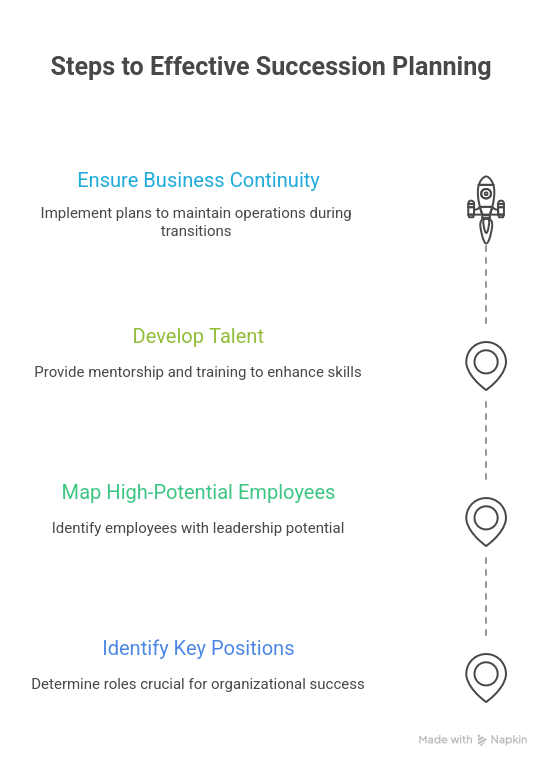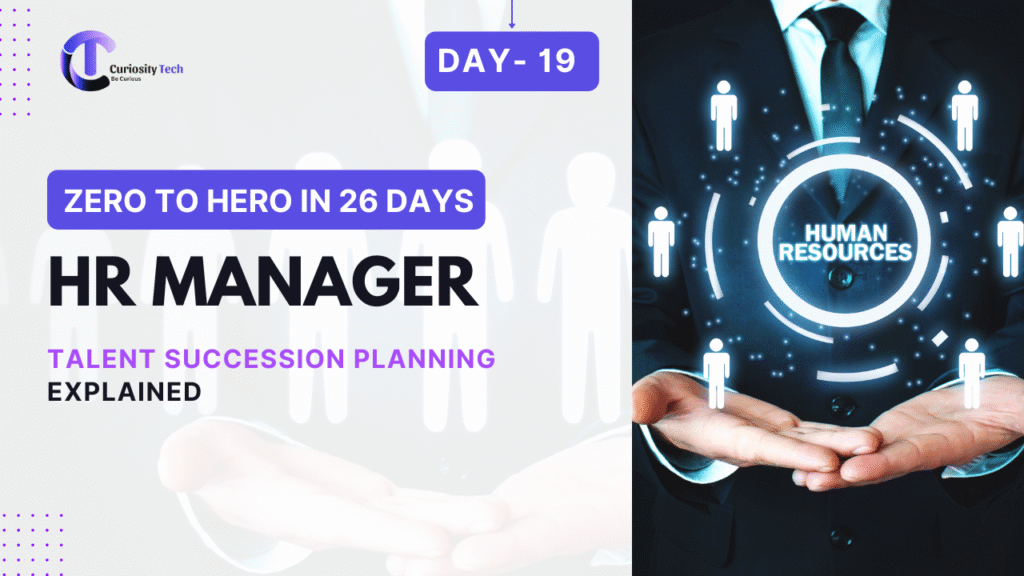Abstract
Succession planning is not just about replacing leaders — it’s about future-proofing organizations. In 2025, rapid technology shifts, the hybrid workforce, and global competition demand robust succession strategies that prepare employees at all levels for critical roles.
This whitepaper explores the strategic importance of succession planning, frameworks used globally, and how Curiosity Tech, Nagpur (curiositytech.in) implemented a proactive model to reduce leadership gaps and build long-term organizational resilience.
1. Introduction – Why Succession Planning is Urgent in 2025
- Fact Check: A 2024 Deloitte survey revealed that 56% of Indian mid-sized companies have no formal succession plan.
- Risk: If a key project manager, CTO, or HR head leaves suddenly, projects stall, clients churn, and employee morale dips.
- Opportunity: Companies with strong succession pipelines show 2.5x higher employee retention and 3x faster leadership transition (PwC 2025).
Curiosity Tech recognized that building a “bench strength” of future leaders was critical for growth.
2. What is Succession Planning?
Succession planning is a systematic process of:
- Identifying key positions critical for organizational success.
- Mapping high-potential employees.
- Developing talent through mentorship, training, and cross-functional exposure.
- Ensuring business continuity when vacancies arise.
It covers not only CXO roles but also technical experts, project managers, and functional leads.

3. Key Components of Succession Planning
1. Critical Role Identification
- CXO roles (CEO, CTO, CFO).
- Middle management (Project Heads, HR Managers)
- Technical experts (AI Engineers, Cloud Architects).
2. Talent Assessment
- 9-Box Grid (Performance vs Potential).
- Psychometric assessments.
- Leadership competency mapping.
3. Development Plans
- Mentorship programs.
- Leadership academies.
- Job rotation & shadowing.
4. Knowledge Transfer Mechanisms
- Documentation of key processes.
- Recorded training modules.
- Communities of Practice.
5. Monitoring & Review
- Annual succession audits.
- Progress dashboards in HRIS.
- External benchmarking.
4. Strategic Frameworks for Succession Planning
a) 9-Box Grid Model
| Low Potential | Moderate Potential | High Potential | |
| High Performance | Reliable performers | Future-ready with training | Fast-track leaders |
| Moderate Performance | Need coaching | Could improve with development | Hidden gems |
| Low Performance | Exit risk | Misfit | Misallocated talent |
b) Leadership Pipeline Model
- From Individual Contributor → Manager → Functional Head → Business Leader.
- Each level needs different skills (technical → people → strategic).
c) 5-Step Succession Cycle (Curiosity Tech’s model):
- Identify critical roles.
- Evaluate internal talent.
- Assign mentors & learning paths.
- Create “ready-now” list.
- Measure readiness annually.
5. Infographic (Description)
Imagine a flowchart:
- Box 1: Critical Roles
↓ - Box 2: Talent Pool Identification
↓ - Box 3: Development & Mentorship
↓ - Box 4: Readiness Evaluation
↓ - Box 5: Leadership Transition
This pipeline visually shows how succession planning is continuous, not event-based.
6. Case Study – Curiosity Tech’s Succession Strategy (2023–2025)
Challenge:
- High dependency on senior project managers.
- Lack of internal replacement for HR Head role.
Strategy Implemented:
- Mapped critical positions (CTO, HR Head, Cloud Team Lead).
- Built 9-box assessments for 120+ employees.
- Launched “Future Leaders Program” – 18-month mentorship with external trainers.
- Introduced Job Rotation – Developers shadowed project managers for 3 months.
Results:
- Built a “Ready-Now” pool of 12 leaders across departments.
- Reduced leadership hiring costs by 35% (fewer external hires needed).
- Achieved 100% business continuity during a sudden HR Head resignation in 2024.
7. Ethical & Legal Considerations
- Avoid Favoritism: Succession plans must be transparent.
- Diversity in Talent Pools: Ensure DEI representation (see Day 16 blog).
- Data Privacy: Assessment reports must comply with India’s DPDPA 2023.
8. Global Best Practices
- GE’s Leadership Pipeline – Famous for developing CEOs across industries.
- IBM’s AI-Powered Succession Tools – Predict retirement risk & replacement readiness.
- Tata Group – Known for grooming leaders internally through Tata Administrative Services.
9. Challenges in Succession Planning
- Resistance from current leaders who feel threatened.
- Employees leaving mid-development.
- Bias in identifying “high potentials.”
- Lack of structured documentation.
10. Recommendations for HR Managers
- Start with critical 10 roles, don’t overcomplicate.
- Use HR tech tools to track readiness levels.
- Build cross-functional exposure.
- Run succession simulations (mock leadership transitions).
11. Conclusion
Succession planning is not optional in 2025 — it’s survival. Without it, organizations risk chaos when leaders exit. Curiosity Tech’s proactive approach proves that even mid-sized IT firms can build leadership pipelines that ensure business continuity and resilience.
By combining frameworks (9-box, leadership pipeline) with real mentorship and job rotation, HR leaders can make succession planning a living, breathing part of organizational culture.

